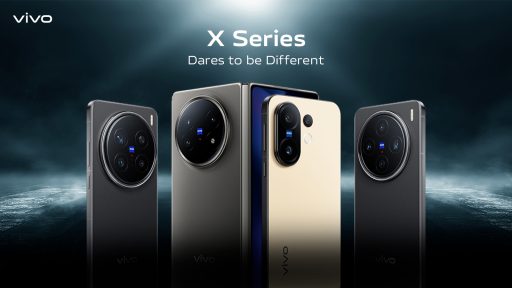Through the Lens: vivo Shaping Smartphone Photography Through Three Decades

vivo is celebrating 30 years of its existence. In those 30 years, the company has challenged not just legacy brands but itself as well through continuous and consistent innovation. It’s a bit poetic, then, that I write this piece using the company’s latest vivo X Fold5 foldable device, while in China to attend vivo’s 30th anniversary journey. The X Fold5, to me, stands as the perfect reflection of the company’s journey, showcasing not just innovation in design but also features that meet the needs of users, such as multitasking on Origin Workbench and smartphone photography through ZEISS tuned lenses. And while there are many aspects of vivo’s journey that I could talk about, it’s the company’s evolution in smartphone photography that I want to focus on.
Photography Without the Fuss
One of the reasons vivo has managed to stand out is by making smartphone photography feel easy. If you rewind just a decade, taking a good photo on your phone meant fiddling with settings, worrying about light, and hoping the final result wasn’t a grainy blur. Today, that friction is gone. vivo has managed to stand toe-to-toe with brands like Google and Apple as pioneers of that shift. vivo’s philosophy has always been that the camera shouldn’t get in the way of the moment. That belief has carried through its devices, giving people the confidence to pull out their phone, point, and shoot, knowing the story they want to tell will come through.
More Than Pixels: Capturing People and Cultures
The real impact of smartphone photography isn’t measured in megapixels. It’s measured in the way it has changed how we document our lives. Every decade has marked a leap, from casual snapshots to photos that could be framed, from family albums to Instagram feeds that capture entire cultural movements. The magic lies in accessibility: photography is no longer exclusive. Communities, traditions, and everyday stories find their way onto our screens in ways that were unimaginable just a few years ago. vivo has leaned into this transformation, not just improving hardware, but also making sure the images feel true, infused with empathy, emotion, and a sense of belonging.
I saw this first-hand during my visit to vivo’s campus in China, where they showcased some truly spectacular photos captured on vivo phones over the years. The kind of moments that can be frozen on a smartphone today are genuinely impressive.

Before the walkthrough of vivo’s photo gallery, I was taken behind the scenes to see how those results are made possible. From mock setups that recreate restaurants and bedrooms, to labs that simulate tricky lighting conditions, to human-like models designed for portrait tests, vivo is working to get its cameras as close to DSLR-level quality as possible. And of course, it doesn’t hurt to have tuning expertise from ZEISS in that process.
Meeting Users Where They Are
What’s impressed me most is how vivo has managed to understand context. In India, for example, weddings are not just events, they’re cultural milestones. vivo has worked to fine-tune its cameras for such occasions, ensuring portraits look natural in dimly lit mandaps, and colors stay vivid in a bustling baraat procession. More recently, features like Wedding Portrait Studio or Wedding Vlog on the V Series reflect how the company is building tools around real cultural needs. Even something as experimental as the AI Four Season filter, which lets you see how a memory might look in another time of year, speaks to that desire to reimagine stories rather than just capture them.
Devices that Defined vivo’s Photographic Identity
If there’s a thread running through vivo’s imaging story, it’s how quickly flagship innovations have flowed into the mainstream. The vivo X60 Pro was a turning point in India, introducing ZEISS optics and gimbal stabilisation at a time when most brands were simply pushing higher megapixel counts. Later flagships like the X80 Pro and the X200 Series built on that with cinematic video modes and portrait science, bringing smartphone imaging closer than ever to professional cameras.

But what’s equally important is how that DNA has trickled down. The V Series devices, like the V30 Pro and V40, carried forward ZEISS inspired imaging and portrait enhancements, making them accessible to younger users who might never touch an X Series Flagship. This laddering effect has given vivo a rare kind of consistency: whether you’re holding a premium foldable or a stylish mid-ranger, the photographic philosophy remains intact.
Collaboration as a Catalyst
Of course, none of this happens in isolation. Partnerships have played a big role in sharpening vivo’s photographic identity. The brand’s collaboration with ZEISS has brought professional-grade imaging know-how into smartphones, narrowing the gap between what’s in your pocket and what’s in a camera bag. But what I find equally fascinating is how vivo has used platforms like the Photo Exhibition at Blue Week to encourage creators worldwide to tell their stories. It’s not just about better lenses, it’s about creating a culture around photography that values diversity and perspective.
Disappointments and Challenges that Led to Innovations
As much as vivo was happy to show off its innovation over the years, it also prides itself in its failures, which I found interesting. For example, they displayed an actual hammer in between the timeline of products from 1995 to 2025. Confused? So was I. Apparently, the hammer was used in 2008 to smash a pre-release phone because the company deemed it not up to the “quality” it to the public.

Another recent example of owning up to challenges and improving on the go was with a feature in the V Series – the color changing feature. A popular feature with high level acceptance from customers at its time, lost its novelty as the series adopted a more premium outlook. And based on hundreds of insights shared by consumers, vivo took the step to do away with this feature in order to retain a premium product in the market. For vivo, it is not just about adding features, it is about real time understanding of the consumer needs as they evolve.
A New Chapter, Framed in Stories
Thirty years in, vivo could be forgiven for looking back. But spending time with the X Fold5 and hearing about what’s next, I get the sense that the company is more interested in the future than the past. Smartphone photography has already come a long way, but it still feels like we’re only scratching the surface of what’s possible, how images can connect us, bridge cultures, and preserve the fleeting moments that matter most. And that, to me, is vivo’s greatest achievement: not just building devices, but shaping the way we tell our stories, through failures and successes. Or rather, failures that have led to successes.



